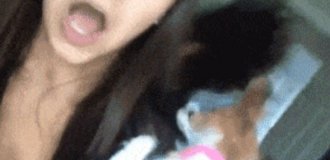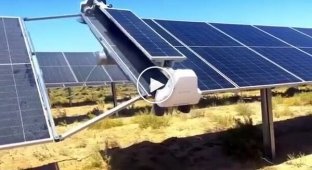Circles of death: hundreds of ants dance in a circle until they are exhausted. What is this strange phenomenon? (10 photos)
Ants are considered to be some of the smartest insects. They can solve unexpected problems, act as a large organized team, can learn, and a lot of other interesting things. But here's the rub: sometimes these little insects start walking in circles for no apparent reason. 
This is not a figure of speech: thousands of insects, as if spellbound, dance in a circle, eventually dying of impotence. This phenomenon is called "death circles" and is observed in a wide variety of ant species. And scientists still haven't solved the mystery of this behavior. 
How nice that even insects appreciated the traditional entertainment - round dances!
All articles devoted to this topic say that the reason for such behavior of arthropods is a failure in their navigation program. Specifically, in the ability to recognize pheromones and move along these marks. Pheromones are species-specific volatile substances that ants secrete to mark the road. When a worker finds something edible, he will, if possible, take a piece and carry it to the anthill, leaving behind marks of pheromones, like an invisible thread from food to home. 
If your party is not like this, you don't even have to invite me!
The rest of the ants in the colony can follow this scented thread. And if there is still food left, they will also mark the way back with a trail of pheromones. More food = more marks = more ants will go to get this food. The scheme is very simple and extremely effective. 
Under normal conditions, ants build a clear line from food to home. Or they move in a military march, like these swinging South American ants.
And some ants are even more cunning - they mark not only the path "food - home", they mark their entire route. So the worker can return to the anthill from any point, it's like following your own tracks in the snow. So, scientists suggest that if an ant goes too far, its pheromone trail can dissipate and become inaccurate. At some point, the insect loses its bearings, gets lost, goes back and stumbles upon its just-left trail. 
Coming soon to all cultural centers in the country.
As a result of such wanderings, the chain closes, and the ant simply begins to walk in circles. And since it repeatedly marks its route with a trail of pheromones, other ants join it - after all, the brighter the smell, the more food there should be at the end of the path. But there is no food! In a mad race for their shadow, ants can spend up to 2 days until the entire colony dies of impotence. There are records of ant gates with a diameter of 365 meters - the entire anthill went out to die! 
This is how people from the provinces see the Moscow Ring Road.
This theory sounds very logical, but there are a couple of buts. In addition to the pheromone 2GIS, ants have a couple more navigators! For example, they can navigate by the magnetic poles of the earth. This is especially important for desert species, for example, for phaeton ants, because in the heat the pheromone trail evaporates in a matter of minutes. And with the help of a built-in magnetic compass, insects unmistakably return to the nest along a straight trajectory. 
In fact, desert ants have a compass built into them. Very convenient when there are no other landmarks!
Ants also use step counting for navigation. Experiments on lengthening and shortening ant legs showed that they count the number of steps they have taken from the anthill in order to return home. Thus, the short-legged ones did not reach their destination, while the long-legged ones, on the contrary, went further. Moreover, they both did not understand what was happening at all, and where their home was now. 
Girls' group: Ugh, she's kind of weird, let's not be friends with her. Boys' group:
Scientists have also found that ants have the ability to navigate by optical flow, just like bees do. To put it very simply: insects calculate and remember how objects around them move. Based on these calculations, the little insect will always find its way home - bees also fly very far, but still always find their hive. 
Some ants travel up to a kilometer away from their nest and return without any problems.
It turns out that ants have at least 4 ways to navigate in space. And if one suddenly starts to “glitch” and lead the insect in circles, why doesn’t the ant simply switch between navigators and find the house by the magnetic field? And if it, for example, counted its steps, why not return strictly by the distance traveled? And a bunch of other questions, in response to which one can only make hypotheses. 
Goosebumps on the back when mom says: "Don't you want to tell me anything?.."
First, we don't know for sure whether all ant species have 4 ways of orientation at once. Perhaps certain species use one, and when this single compass fails, the ant begins a deadly circular motion. Or all of these 4 ways are there, but insects just can't combine them. For example, "switch" to counting steps when the pheromone trail starts driving in circles.
























